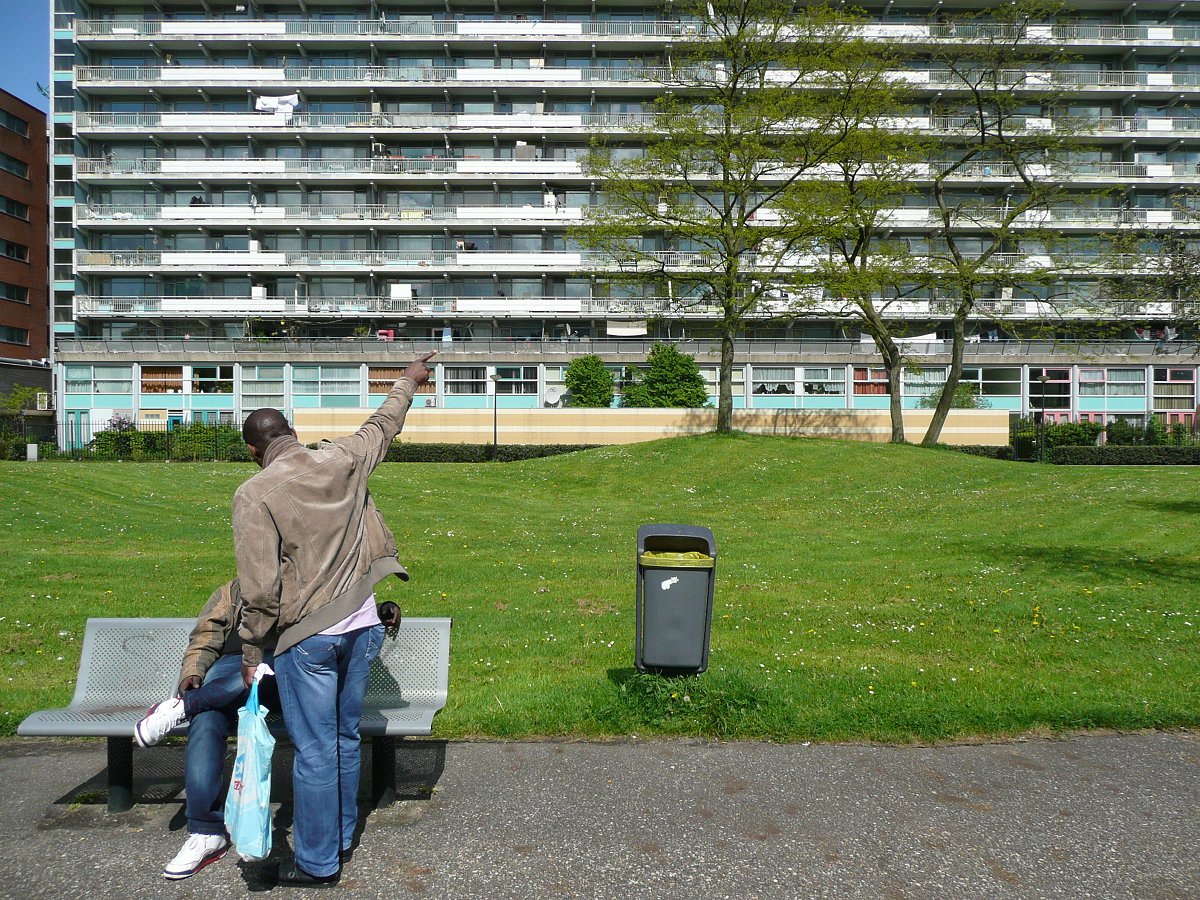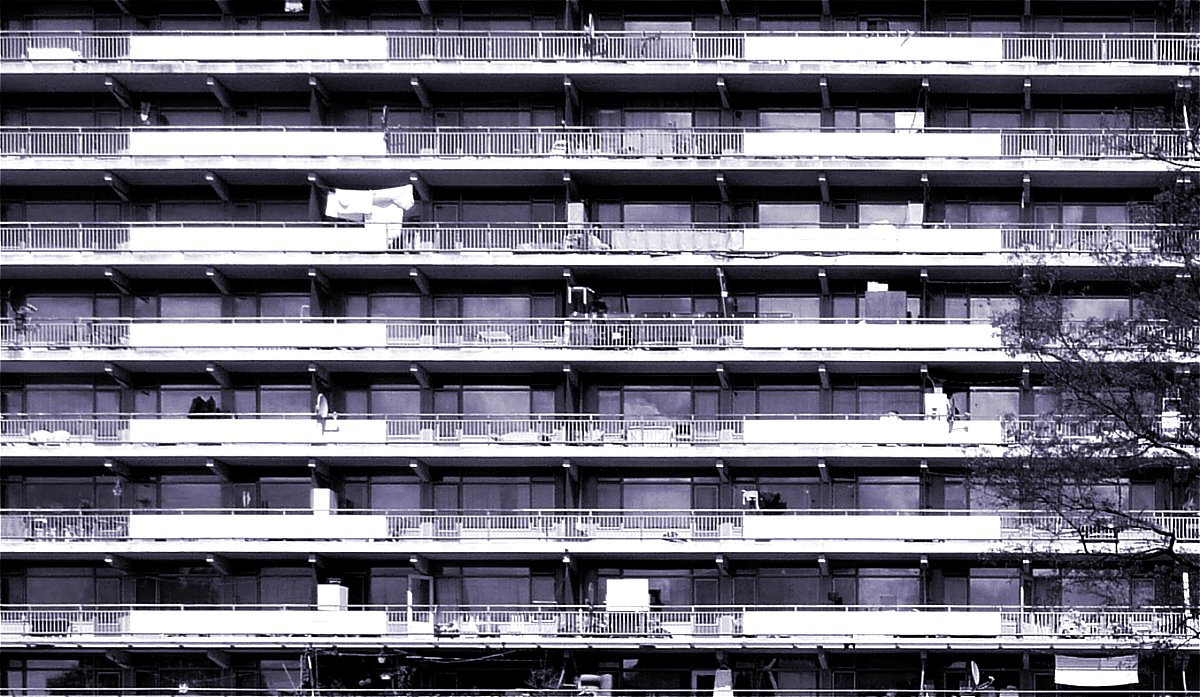Increasing exclusion and (transport) poverty in European cities
Research into cases in Amsterdam, Rotterdam, Madrid, Paris (& Brussels)
Rob van der Bijl – Ghent University (Belgium) / Favas.net (Amsterdam, Netherlands) – concludes that due to the covid-19 pandemic, urban residents from the poorer neighborhoods are increasingly excluded from society.
The covid-19 pandemic acts as a kind of contrast fluid for research into society, mobility and space. Indeed, we can perceive contrasts within societal classes and groups of citizens with regard to their access to social activities and amenities more sharply than ever. In the still prosperous countries of Western Europe, many have ample access to every form of transport – transport obesity. On the other hand, citizens in the same countries who do not have suitable and sufficient transport, hence, lack social accessibility, is believed to be extensive – transport poverty (Rob van der Bijl, 2020a).
No or poor social accessibility, expressed in terms of transport poverty and transport disadvantages, must be largely derived from social, contextual factors. According to Karen Lucas (2012) ‘transport poverty’ only arises when these factors (such as health, employment, education, culture, amenities) will have an adverse effect and overlap with, in that case, equally unfavorable, mobility-related factors (such as involuntary car dependence without car availability, required expensive public transport, misunderstood cycling culture).
There are many indications that the covid-19 pandemic threatens not only health, but indirectly also socio-economic security. In four case districts (in Amsterdam, Rotterdam, Madrid and Paris-Grigny) we therefore investigated how the coronavirus worsens the economic position on basis of the degree of food aid as an indicator (Rob van der Bijl, Ghent University, Favas.net, 2020-2021). After all this support, such as the use of food banks, only takes place if someone every month has insufficient money left over for food and drink.
Previous research by Favas.net (2009-2019) assessed mobility-related factors in these types of neighborhoods as unfavorable. Therefore it has become more likely that due to a strongly deteriorated economic situation (see data) transport poverty and disadvantages have increased in the poorer neighborhoods. For example in Spain, according to research by The Institute of Automotive Studies (Tongji University, Shanghai, September 2020), the sale of second-hand barrels (often for no more than 500 euros) was at the end of August 2020 increased by 30% compared to 2019, which is unquestionably a sign of high transport distress.
Early 2020 the use of public transport is decreasing dramatically. For example in the Netherlands, here at the lowest point of the crisis (week 15) public transport had lost 95% of the travelers (Arthur Scheltes, Sander van der Drift, 2020). Some of the passengers returned in the second half of 2020. Yet, at the beginning of September, for example in Paris, it appears that public transport usage is 40% less than in the comparable period in 2019.
At the start of 2021, the pandemic is continuing (see data) to ravage the districts / neighborhoods we have studied and lock-downs are perpetuating the exclusion of many citizens. The effect of the pandemic on public transport usage compared to the autumn of 2020 is not yet clear. The impression is that in our four cities the trend towards less usage is continuing, while cycling is gaining in significance.

Epilogue
Early 2021 GPs in affected neighborhoods of Amsterdam observe an accumulation of problems. “People have less living space, have less money to spend, are often low-literate, often live together with many people,” to paraphrase the cry of the heart from many GPs.
Fortunately, a lot of solidarity exists in these neighborhoods (such as within the Zuidoost district). However, due to a weak social position and a spreading covid-19 pandemic (see data) many residents have had a hard time. Poor physical / mental health and low literacy, combined with limited living space and financial difficulties, put many in serious difficulties. They cannot convey their medical story well and get lost in society. Loneliness is common. “As a doctor you get frustrated by witnessing such loneliness and misery.” Residents in the deprived neighborhoods are excluded.
The views and experiences of the Amsterdam GPs are confirmed by care providers in other cities. The volunteer-run neighborhood restaurant in Grigny (‘Les Restos du Cœur de Grigny’) is open three times a week to support families in need with meals. These volunteers also assist people with social and financial problems. In parallel, subsidiary organizations offer support in finding work (‘Tremplins du Cœur’) and help with the search for housing or literacy for illiterate people. “More than ever, our volunteers must roll up their sleeves now that the pandemic has struck like this.” The Grigny case teaches us that, in addition to medical care, efforts must be made to maintain basic facilities to ensure that urban residents in these types of neighborhoods are not completely excluded from society.
Doctors in affluent areas of a city like Amsterdam tell a completely different story. A healthy lifestyle, a high level of education and spacious housing make the residents of these neighborhoods much less vulnerable to the pandemic. These citizens continue to participate fully in social life. There is no exclusion, nor transport poverty or disadvantages.

Data
The first series of data was collected from public sources in the second half of August 2020: for food aid next to various local sources, respectively Voedselbanken Nederland, Comunidad de Madrid (Área delegada de Coordinación Territorial), Fédération française des banques alimentaires; for covid-19 figures, also next to various local sources (and with our additions from January / February 2021) respectively GGD Rotterdam-Rijnmond, GGD Amsterdam, Comunidad de Madrid (Consejería de Sanidad), Santé Publique France.
We have not yet succeeded in obtaining reliable and comparable mobility data for our four cities. It seems that this kind of data is simply not available. Often existing data relates to averages of mobility on a national or regional scale. Gaining insight at the local level (districts and neighborhoods – i.e. our four cases) seems hardly possible for the time being.
Amsterdam – The capital of the Netherlands has an increase in food aid of 26%. Local sources in Zuidoost, on the other hand, point to a doubling of the number of households dependent on food aid (e.g. Mac-Nack, end of July 2020).
Covid-19 figures Zuidoost August 2020: 12.4 infections per 10,000 inhabitants. The situation deteriorated at the beginning of 2021. Between October 19, 2020 and January 24, 2021, 22.1% of all tests in Zuidoost have a positive result. In the prosperous neighborhoods that percentage is much lower in this period, for example in South only 11.3%.
Rotterdam – In the Bloemhof neigborhood within the Feijenoord district of Rotterdam, the ‘Sandwhich Man’ serves breakfast to school children every morning. The food banks are working even more overtime: in Rotterdam / Feijenoord there is an increase of 10% (compared to 2019), against a national average of 8%.
Covid-19 figures Feijenoord August 2020: 96 contamination per 10,000 inhabitants. In the fourth week of 2021, the percentage of residents of Feijenoord who tested positively was 16.3% (compared to 11.0% in the region and 9.0% in a very prosperous neighborhood such as Hillegersberg-Schiebroek).
Madrid – 3 of the 21 city districts in the Madrid urban region, namely our Ciudad Lineal case and the Puente de Vallecas and Usera districts, together account for 50% of vulnerable households that receive menus from the city region every day. The number of meals provided has been increasing daily since March 2020.
Covid-19 figures Ciudad Lineal August 2020: 52 infections per 10,000 inhabitants (August 18), Ciudad Lineal is one of the 10 districts in Madrid with the most infections in August 2020. Mid-January 2021, our case district was hit hard again. Figures of January 13 show a contamination rate for Ciudad Lineal of 60 cases per 10,000 inhabitants. Only 3 districts have a high score: Barajas (76), Hortaleza (64) and Fuencarral-El Pardo (61).
Parijs – In France, the use of the food bank has already increased by 20-25% in the course of May 2020. Within Île-de-France, such as the district of Grigny, Département Essonne (91), including our casus neigborhood La Grande Borne, packed lunches are also distributed on a large scale to families in difficulty. Various sources (including Grigny91) report a strong increase in the demand for food aid in these types of suburbs.
Covid-19 figures Grigny, Département Essonne (91) August 2020: 101 infections per 10,000 inhabitants. Early 2021 (February 3, 2021), the percentage of positive test (RT-PCR) is 6.99%, against the city of Paris (75) with 5.00%.
Data update (March 29, 2022)
A recent survey by Statistics Netherlands (CBS) confirms the findings and expectations of our survey. Particularly during the second wave of the pandemic, the known differences in mortality probabilities for COVID-19 (in the Netherlands) between income groups increased further. The relative risks of COVID-19 death among people with a migration background were generally slightly higher than for people with a Dutch background. This also applies after controlling for differences in socio-demographic characteristics such as level of prosperity. The risk of COVID-19 death was particularly higher among people of Moroccan, Turkish and Surinamese background.
Source: CBS /
References
. Rob van der Bijl (2020a), Transport poverty scrutinized by mobility thresholds. Opening up the Planning Landscape – 15 years of Actor-relational Approaches to Spatial Planning in Flanders, the Netherlands and Beyond, InPlanning, Groningen, pp.159-171.
. Rob van der Bijl (2020b), Covid-19-pandemie versterkt vervoersarmoede. Colloquium Vervoersplanologisch Speurwerk, Anders Dan Anders, Corona editie, The Hague, December 2020. pp.44-45.
. Karen Lucas (2012), Transport and social exclusion: Where are we now? Transport policy, 20, pp. 105-113.
. Arthur Scheltes, Sander van der Drift (2020), De OV-reizigers stappen over. Colloquium Vervoersplanologisch Speurwerk, Anders Dan Anders, Corona editie, The Hague, December 2020. pp. 58-59.
The four cases are based on earlier research by Favas.net (2009-2019) into the four neighborhoods in Amsterdam, Rotterdam, Madrid and Paris-Grigny (La Grande Borne) respectively. See also our work on transport poverty.
The epilogue is based on two articles in local media in Amsterdam and in Grigny respectively (Het Parool, February 6, 2021; Grigny Mag # 395, January-February 2021).
The research is also related to similar projects and reports from Favas.net:
Amsterdam Zuidoost
Rotterdam
La Grande Borne
Transport poverty
Project implementation: Rob van der Bijl, Ghent University, Favas.net, 2020-2021.
First publication: February 13, 2021.
Continuation of the reseach: Brussels (November 2021), Amsterdam (February-March 2022).

Ongoing research, Amsterdam South-West, March 3, 2022

